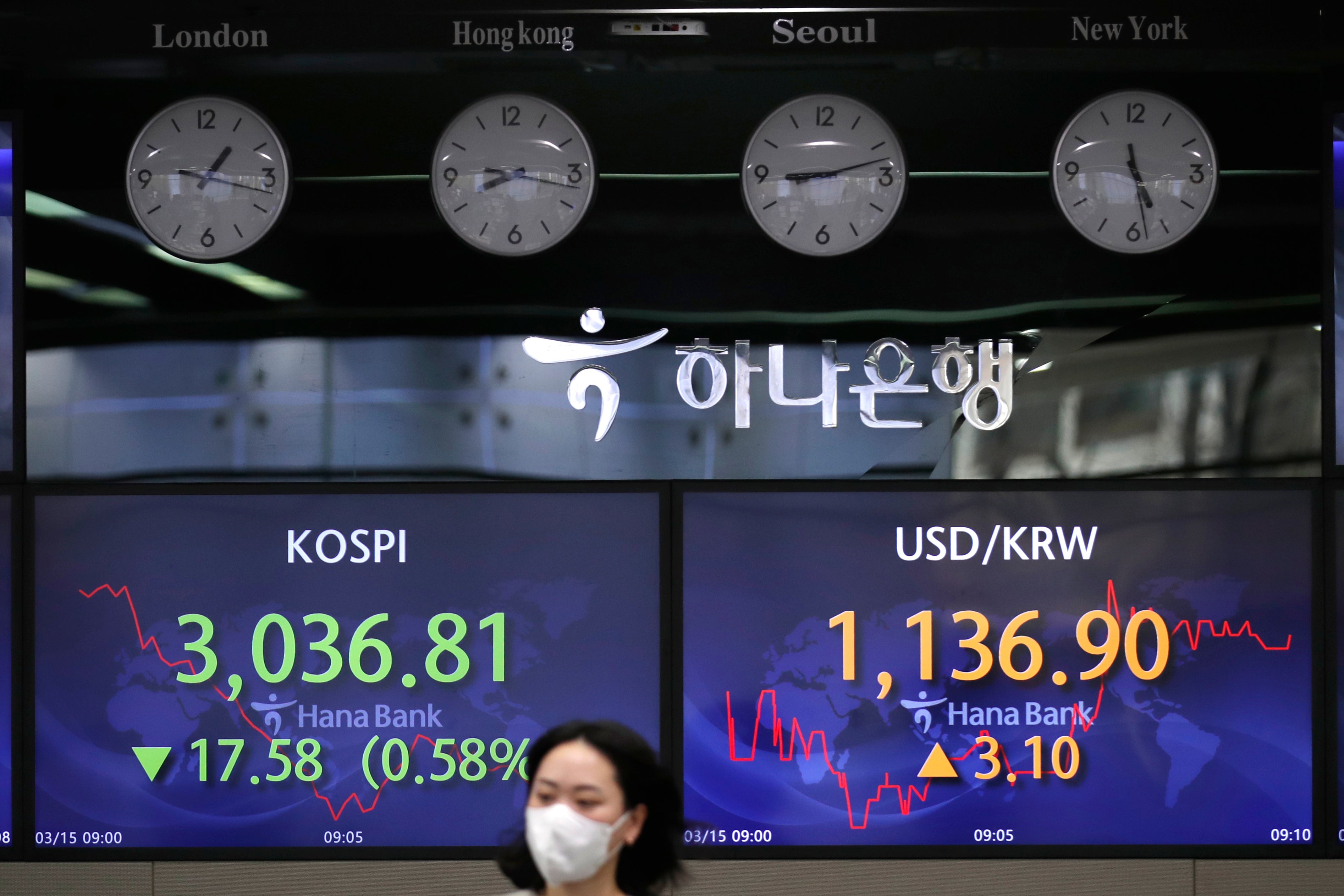Asian shares mixed as China reports so-so economic data
Shares are mixed in Asia as China reported a variety of data that painted a complicated picture of its recovery from the pandemic

Your support helps us to tell the story
From reproductive rights to climate change to Big Tech, The Independent is on the ground when the story is developing. Whether it's investigating the financials of Elon Musk's pro-Trump PAC or producing our latest documentary, 'The A Word', which shines a light on the American women fighting for reproductive rights, we know how important it is to parse out the facts from the messaging.
At such a critical moment in US history, we need reporters on the ground. Your donation allows us to keep sending journalists to speak to both sides of the story.
The Independent is trusted by Americans across the entire political spectrum. And unlike many other quality news outlets, we choose not to lock Americans out of our reporting and analysis with paywalls. We believe quality journalism should be available to everyone, paid for by those who can afford it.
Your support makes all the difference.Shares were mixed in Asia on Monday as China reported a variety of data that painted a complicated picture of its recovery from the pandemic.
Benchmarks rose in Hong Kong and Tokyo but fell in Shanghai and South Korea
The passage of a $1.9 trillion aid package for the U.S. economy has added to investor confidence that the U.S. and global economy will likely experience a strong recovery from the pandemic in the second half of the year but also potentially increase the rate of inflation.
China has led the global recovery, reopening earlier than other countries from coronavirus shut-downs that emerged in the central city of Wuhan in early 2020.
Retail sales jumped nearly 36% year-on-year in January-February from a year earlier. But the surge was mostly driven by strong demand for cars, catering and jewelry, suggesting Chinese consumers were splashing out during the Lunar New Year, ING economists said in a report.
The data were exaggerated by low base effects from the shutdowns last year, they said.
Meanwhile, the jobless rate rose to 5.5% from 5.2% a year earlier, possibly affected by flare ups of coronavirus in some areas, analysts said.
“Travel restrictions weighed on retail sales but boosted industrial output and investment. We think activity will remain strong during the first half of this year, before giving way to a weaker second half," Julian Evans-Pritchard of Capital Economics said in a commentary.
“Domestic policy support is being gradually withdrawn. And foreign demand for Chinese goods will drop back as vaccines start to reverse the recent shift in global consumption patterns," he said.
The Shanghai Composite index fell 0.6% to 3,432.01. Tokyo's Nikkei 225 index edged less than 0.1% higher, to 29,732.98, and the Hang Seng in Hong Kong climbed 0.6% to 28,907.15. In South Korea, the Kospi lost 0.2% to 3,049.16. Sydney's S&P/ASX 200 inched 0.1% higher, to 6,771.00.
Investors will be watching this week for the outcome of a Federal Reserve policy meeting, which wraps up on Wednesday. Japan's central bank will be issuing a policy update on Friday.
On Friday, a late-afternoon burst of buying helped nudge the S&P 500 0.1% higher to 3,943.34, extending its winning streak to a fourth straight day. The Dow Jones Industrial Average added 0.9%, to 32,778.64, lifted by industrial stocks like Boeing and Caterpillar. The tech-heavy Nasdaq fell 0.6%, to 13,319.86.
The Russell 2000 index of smaller company stocks advanced 0.6% to 2,352.79. It ended the week 7.3% higher, outpacing the S&P 500′s 2.6% gain for the week.
The bond market again was the dominant force in pulling tech stocks mostly downward, because as yields push interest rates higher, they make high-flying stocks look expensive.
After remaining stable for most of the week, the yield on the 10-year Treasury note jumped to 1.62% from 1.52% a day earlier. Investors had sold off stocks late last week after that yield crossed above the 1.60% mark. On Monday, the 10-year Treasury was at 1.63%.
The increase in bond yields came as President Joe Biden signed into law the $1.9 trillion stimulus plan, which will include $1,400 checks for most Americans and additional payments for those with children or those who collected unemployment benefits last year. President Biden also laid out a plan, in a primetime speech Thursday, to expand vaccine eligibility to all Americans by May 1.
Wall Street got another sign Friday that inflation is creeping higher. The Labor Department said its producer price index, which measures inflation before it reaches consumers, rose by 0.5% last month following a record jump of 1.3% the month before. Over the past year, wholesale prices are up 2.8%, the largest 12-month gain at the wholesale level in more than two years.
Some economists fear that inflation, which has been dormant over the past decade, could nudge higher under the extra demand generated by the stimulus package. Others disagree, given that there are 9.5 million fewer jobs in the American economy than there were before the pandemic hit a year ago. They contend that unemployment will keep a lid on inflation.
In other trading Monday, benchmark U.S. crude oil climbed 50 cents to $66.11 per barrel in electronic trading on the New York Mercantile Exchange. It lost 41 cents to $65.61 per barrel on Friday. Brent crude, the international standard, added 47 cents to $69.69 per barrel.
The U.S. dollar rose to 109.18 Japanese yen from 109.02 yen late Friday. The euro fell to $1.1944 from $1.1949.